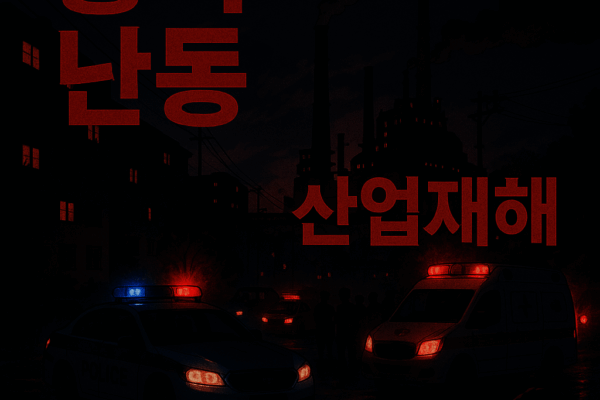The Tornado City, St. Louis: Where the St. Louis Tornado Begins and a Sense of Crisis Looms
St. Louis may look like an ordinary Midwestern city in the United States, but every spring, it faces the terrifying wrath of nature that brings fear and anxiety. Why has St. Louis become famous as a hotspot for tornadoes?
The fame of St. Louis as the home of the ‘St. Louis Tornado’ is largely due to geographic and climatic factors. The city sits at the eastern edge of America’s infamous Tornado Alley, a central U.S. region known for frequent, powerful tornadoes.
But St. Louis’s tornado risk goes beyond just its location. The local climate plays a crucial role:
- Warm, humid air: rising from the Gulf of Mexico
- Dry western air: moving eastward from the Rocky Mountains
- Cold northern air: descending from Canada
The point where these three air masses collide is near St. Louis, creating the perfect atmospheric conditions that spawn the mighty St. Louis Tornado.
Historically, St. Louis has endured multiple devastating tornadoes. The most notorious struck in 1896, claiming hundreds of lives. This tragedy remains one of the deadliest tornado events in U.S. history.
Today, residents of St. Louis are well aware of this lurking danger. Each spring, they keep a vigilant eye on the skies, preparing for whenever the St. Louis Tornado may strike. In a city where advanced warning systems and tornado drills are part of everyday life, tornadoes have become more than just natural phenomena—they are woven into the local culture.
The story of St. Louis stands as a remarkable testament to human adaptability and resilience in the face of nature’s fury. Despite the constant threat of the St. Louis Tornado, the city and its people persist, steadfastly living their lives.
A Moment That Changed History: The 1896 St. Louis-East St. Louis Tornado
Imagine the day when one of the deadliest tornadoes in actual history ravaged St. Louis. With 255 lives lost and over 3,000 injured, the story of that day forever changed the city—what did it leave behind?
On May 27, 1896, the St. Louis tornado swept through the American Midwest in a tragic event that etched a dark chapter in history. This colossal EF4 tornado tore through St. Louis and East St. Louis, demonstrating devastating power.
Path and Scale of the Tornado
- Traveled northeast along the Mississippi River
- Maximum width about 1 km, traveled approximately 12 km
- Estimated wind speed exceeding 260 km/h
Damage Overview
- Massive destruction of residential areas
- Economic blow from the collapse of industrial facilities
- Communication and transportation infrastructure brought to a standstill
The aftermath of the St. Louis tornado went beyond physical damage, deeply impacting the entire local community. It highlighted the critical importance of disaster response systems and spurred major changes in urban planning and construction methods.
Lessons Left by the Tornado
- The necessity of early warning systems
- The importance of sturdy building structures
- Strengthening community disaster preparedness training
This event not only transformed tornado response policies in the St. Louis area but also across the United States. The advanced weather forecasting systems and disaster response protocols we rely on today stem directly from lessons learned through such tragic experiences.
The history of the St. Louis tornado stands as a testament to human vulnerability in the face of nature’s fury, yet also as proof of humanity’s resilience and wisdom in overcoming disasters and preparing for a safer future.
Climate Change and the St. Louis Tornado: Why the Danger Persists
Did you know that recent warming and climate change are amplifying the risks of tornadoes? Changes in precipitation, atmospheric instability, and the northward movement of tropical cyclones—these natural phenomena around St. Louis are redrawing the boundaries of disaster.
The Link Between Climate Change and St. Louis Tornadoes
While St. Louis has historically been exposed to tornado risks, recent climate change has intensified this threat. Climate change impacts the frequency and strength of tornadoes in St. Louis in the following ways:
Increased Atmospheric Instability: Rising temperatures from global warming elevate atmospheric instability—a key condition for tornado formation.
Shifts in Precipitation Patterns: Climate change-driven variability in rainfall boosts humidity levels and unstable atmospheric conditions, which more frequently create the perfect storm for tornado development.
Jet Stream Alterations: Rapid warming in the Arctic is modifying jet stream patterns, influencing tornado occurrences.
Factors Driving the Growing Tornado Risk in St. Louis
Several reasons explain why tornado danger continues to escalate in the St. Louis area:
Geographic Location: Situated in the infamous “Tornado Alley,” St. Louis is inherently at high risk for tornadoes.
Northward Shift of Tropical Cyclone Systems: Climate change is pushing tropical cyclone systems further north, increasing tornado risk around St. Louis.
Urbanization: The heat island effect from urban development alters local climate, potentially worsening conditions conducive to tornadoes.
Future Outlook and Preparedness Strategies
The threat of tornadoes in St. Louis is expected to continue rising, making preparedness at both community and individual levels crucial:
Advanced Forecasting Systems: Progress in meteorological observation technology must enable more precise tornado predictions.
Enhanced Community Education: Continuous public education on the relationship between climate change and tornado risks, along with response strategies, is essential.
Strengthening Infrastructure: Improving the durability of buildings and public facilities and promoting tornado-resistant designs are critical steps.
In a reality where climate change heightens tornado danger in St. Louis, scientific understanding and systematic readiness are more vital than ever. Through active community involvement and ongoing research, St. Louis can evolve into a safer, more resilient city.
A Practical Survival Guide: Everything You Need to Know About Preparing for and Responding to Tornadoes in St. Louis
Residents of St. Louis live with the constant threat of tornadoes. Real-time alert systems, secure shelters, and community cooperation are at the heart of their survival strategies. Based on the experiences of actual tornado survivors, here is a hands-on guide to preparing for and responding to tornadoes in St. Louis.
1. Utilize Real-Time Alert Systems
- Set up tornado watches and warnings from the National Weather Service (NWS)
- Install local weather apps and activate push notifications
- Keep a NOAA weather radio on and operational 24/7
“During last year’s tornado that hit St. Louis, thanks to the smartphone alert, I was able to take shelter in a safe basement within five minutes.” – Survivor Jennifer (35)
2. Secure a Safe Shelter
- Designate the safest space inside your home in advance (basement, interior room on the first floor)
- Prepare an emergency kit for the shelter (water, food, flashlight, batteries, first aid kit)
- Know the locations of public shelters nearby and routes to access them
3. Build a Neighborhood Cooperation System
- Create an emergency contact network within the neighborhood
- Develop evacuation support plans for vulnerable groups (elderly, disabled)
- Participate in regular community tornado preparedness drills
“Our neighborhood holds tornado drills every spring. Thanks to that, we stayed calm and handled the actual situation confidently.” – Survivor Michael (42)
4. Immediate Actions When a Tornado Strikes
- Quickly move to the central area of the basement or lowest floor
- Stay away from windows
- Protect your body with blankets or mattresses
- Shield your head with a helmet or thick books
5. Ensure Safety After the Tornado
- Check for injuries and provide first aid
- Inspect for secondary hazards such as gas leaks or downed electrical wires
- Stay in a safe location until rescue teams arrive
Tornadoes in St. Louis can happen without warning, but thorough preparation and swift response can dramatically increase your chances of survival. Master this practical guide and share it with your family and neighbors to help safeguard our community together.
Recovery and Rebuilding: The Urban Revival of St. Louis After the Tornado
Amid collapsed buildings and disrupted daily lives, how does St. Louis rise again? From infrastructure and economy to the strength of the community, the true story of a city overcoming a natural disaster begins now.
From Emergency Response to Long-Term Recovery
Immediately after the St. Louis tornado swept through, the city activated a rapid emergency response system. Collaboration between FEMA and local rescue teams facilitated survivor search and rescue efforts, while temporary shelters were established. Moving past this phase, the city began formulating long-term recovery plans.
The Challenge of Rebuilding Infrastructure
Restoring roads, power grids, and water and sewage systems devastated by the tornado became the top priority. The St. Louis city government adopted a ‘smart rebuilding’ strategy, aiming not just to restore but to build stronger and more efficient infrastructure. This effort also generated jobs through the involvement of local construction companies.
The Key to Economic Recovery: Local Businesses
The St. Louis tornado dealt a heavy blow to the regional economy. To aid small business owners’ swift comeback, the city government introduced low-interest loan programs and implemented a ‘business mentoring’ system in cooperation with major corporations. This enabled many businesses to resume operations faster than expected, laying the foundation for economic revival.
The Power of Community Spirit
At the heart of disaster recovery was the resilient community spirit of St. Louis citizens. Neighborhood support movements, expanded volunteer activities, and the ‘St. Louis Strong’ campaign united the entire city. This spirit of solidarity accelerated the recovery process and strengthened the city’s identity.
Building a Disaster Response System for the Future
Learning from the tornado experience, St. Louis has built a more robust disaster response system. Deployment of advanced early warning systems, expanded disaster education programs for citizens, and urban planning that addresses climate change were all implemented. Through these efforts, St. Louis is reborn as a city capable of responding more resiliently to future natural disasters.
The St. Louis tornado left deep scars but also became an opportunity for a fresh start. Through infrastructure reconstruction, economic recovery, and community strengthening, St. Louis is rising as a stronger, smarter city. This is a compelling story of resilience and the unwavering spirit of its citizens overcoming a natural disaster.




